Part of the MIT Climate Action Plan
MIT Climate Symposia: Symposium Three
Decarbonizing the Electricity Sector
December 4, 2019
Chairs: Paul Joskow and Jessika Trancik, MIT
The third of MIT’s six Climate Action Symposia, Decarbonizing the Electricity Sector, was held on Wednesday, December 4, 2019. Topics included:
- developments in solar energy, energy storage, and nuclear energy;
- electrification in the building and transportation sectors; and
- innovation opportunities for zero-carbon electricity technologies in the coming decades.
Schedule
Introduction and overview
Variable renewable energy (VRE) developments and challenges
Moderator: Jessika Trancik, MIT
Speakers:
- Solar energy:
- Moungi Bawendi, MIT
- Vladimir Bulović, MIT
- Energy storage:
- Fikile R. Brushett, MIT
- Yet-Ming Chiang, MIT
- David Danielson, Breakthrough Energy Ventures
- Yang Shao-Horn, MIT
Advances in fission and fusion
Moderator: Paul Joskow, MIT
Speakers:
- Harlan Bowers, X-energy
- Jacopo Buongiorno, MIT
- Earl Marmar, MIT
- Anne White, MIT
Electric vehicles: Market analysis with VRE at scale
Moderator: Jessika Trancik, MIT
Speakers:
- David R. Keith, MIT
- Christopher Knittel, MIT
- Chelsea Sexton, EV industry consultant
Expanding access to electricity in a carbon-constrained world
Moderator: Robert Stoner, MIT
Speakers:
- Kate Steel, Nithio
- Ignacio Pérez-Arriaga, MIT and Comillas University
Conclusion
Speakers
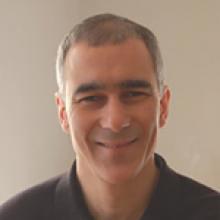
Professor Moungi Bawendi received his A.B. in 1982 from Harvard University and his Ph.D. in chemistry in 1988 from The University of Chicago. This was followed by two years of postdoctoral research at Bell Laboratories, working with Dr. Louis Brus, where he began his studies on nanomaterials. Bawendi joined the faculty at MIT in 1990, becoming Associate Professor in 1995 and Professor in 1996.
Professor Bawendi has followed an interdisciplinary research program that aims at probing the science and developing the technology of chemically synthesized nanocrystals. Prof. Bawendi has been at the forefront of the science and technology of semiconductor nanocrystal quantum dots for over two decades. This work has included the development of novel methods for synthesizing, characterizing, and processing quantum dots and magnetic nanoparticles as novel materials building blocks, studying the fundamental optical properties of quantum dots using a variety of spectroscopic methods, including the development of optical tools to study single nanocrystals, and combining quantum dots with various optical and electronic device structures to study their device properties. His work has also included developing applications of quantum dots in biological and biomedical imaging and sensing, in light emitting devices, photodetection, and solar energy conversion.
Professor Bawendi has published over 250 papers on the science and technology of quantum dots and other materials systems, and has helped four start-up companies in commercializing quantum dot technology. A fifth company spun out from Bawendi’s laboratory uses knowledge gained from his work on quantum dots, applying it to a medical device.
Bawendi has won numerous awards for his work. Among these are the Raymond and Beverly Sackler Prize in the Physical Sciences, the EO Lawrence award in Materials Chemistry from the US Department of Energy, the Fred Kavli Distinguished Lecture in Nanoscience from the Materials Research Society, and the American Chemical Society Award in Colloid and Surface Chemistry.
Bawendi is a fellow of the American Association for the Advancement of Science, a fellow of the American Academy of Arts and Sciences, and a member of the National Academy of Sciences.

As president of X-energy, Harlan implements corporate strategy and oversees the development of modular, smaller, safer, next-generation nuclear fission reactors and advanced uranium fuel that expands reliable, zero-emission nuclear energy into entirely new markets. Harlan has over 35 years of experience that includes managing very large, complex new business initiatives and highly technical engineering development programs. Much of his background has involved aerospace systems development projects with NASA, as well as overseeing engineering services contracts up to $750M in value and +600 staff. His previous responsibilities were with Stinger Ghaffarian Technologies (SGT) where he was Senior Vice President for Business Development. Prior to that, he was VP/Program Manager for a $130M/year NASA multi-disciplinary engineering services contract, delivering systems for Hubble Space Telescope servicing, environmental satellite remote sensing, and International Space Station operations. Harlan received a B.S. in Aerospace and Ocean Engineering from Virginia Tech and an MBA from the University of Maryland, College Park.
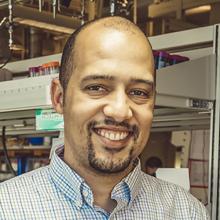
Fikile Brushett is an Associate Professor in the Department of Chemical Engineering at the Massachusetts Institute of Technology (MIT) where he holds the Cecil and Ida Green Career Development Chair. He received his B.S.E. in Chemical & Biomolecular Engineering from the University of Pennsylvania in 2006 and his Ph.D. in Chemical Engineering from the University of Illinois at Urbana-Champaign in 2010 under the supervision of Professor Paul J. A. Kenis. From 2010-2012, he was a Director’s Postdoctoral Fellow in the Electrochemical Energy Storage Group at Argonne National Laboratory under the supervision of Dr. John T. Vaughey. In 2013, he started his independent career at MIT where his research group seeks to advance the science and engineering of electrochemical technologies that enable a sustainable energy economy. He is especially interested in the fundamental processes that define the performance, cost, and lifetime of present day and future electrochemical systems. His group currently works on redox flow batteries for grid storage and electrochemical processing of carbon dioxide and biomass. He also serves as the Research Integration co-Lead for the Joint Center for Energy Storage Research, a DOE-funded Energy Innovation Hub.

Vladimir Bulović is a Professor of Electrical Engineering at the Massachusetts Institute of Technology, holding the Fariborz Maseeh Chair in Emerging Technology. He directs the Organic and Nanostructured Electronics Laboratory, co-leads the MIT-Eni Solar Frontiers Center, leads the Tata GridEdge program, and is the Founding Director of MIT.nano, MIT's new 200,000 sqft nano-fabrication, nano-characterization, and prototyping facility that opened in the summer of 2018. He is an author of over 250 research articles (cited over 40,000 times) and an inventor of over 100 U.S. patents in areas of light emitting diodes, lasers, photovoltaics, photodetectors, chemical sensors, programmable memories, and micro-electro machines, majority of which have been licensed and utilized by both start-up and multinational companies. The three start-up companies Bulović and his students co-founded jointly employ over 450 people, and include Ubiquitous Energy, Inc., developing nanostructured solar technologies, Kateeva, Inc., focused on development of printed electronics, and QD Vision, Inc. (acquired in 2016) that produced quantum dot optoelectronic components. Products of these companies have been used by millions. Bulović was the first Associate Dean for Innovation of the School of Engineering and the Inaugural co-Director of MIT’s Innovation Initiative, which he co-led from 2013 to 2018. For his passion for teaching Bulović has been recognized with the MacVicar Fellowship, MIT’s highest teaching honor. He completed his Electrical Engineering B.S.E. and Ph.D. degrees at Princeton University.

Jacopo Buongiorno teaches a variety of undergraduate and graduate courses in thermo-fluids engineering and nuclear reactor engineering. Jacopo has published 90 journal articles in the areas of reactor safety and design, two-phase flow and heat transfer, and nanofluid technology. For his research work and his teaching at MIT he won several awards, among which the ANS Outstanding Teacher Award (2019), the MIT MacVicar Faculty Fellowship (2014), the ANS Landis Young Member Engineering Achievement Award (2011), the ASME Heat Transfer Best Paper Award (2008), and the ANS Mark Mills Award (2001). Jacopo is the Director of the Center for Advanced Nuclear Energy Systems (CANES). In 2016-2018 he led the MIT study on the Future of Nuclear Energy in a Carbon-Constrained World. Jacopo is a consultant for the nuclear industry in the area of reactor thermal-hydraulics, and a member of the Accrediting Board of the National Academy of Nuclear Training. He is also a member of the Naval Studies Board, a Fellow of the American Nuclear Society (including service on its Special Committee on Fukushima in 2011-2012), a member of the American Society of Mechanical Engineers, and a participant in the Defense Science Study Group (2014-2015).
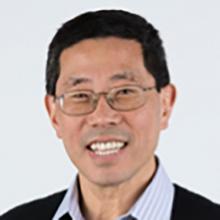
Yet-Ming Chiang is the Kyocera Professor in the Department of Materials Science and Engineering at MIT, where he has been a faculty member since 1985. His research focuses on advanced materials and energy storage technology, in which he has published aobut 300 scientific papers, and holds over 80 U.S. patents, of which more than 60 have been licensed to or are held by practicing companies. Chiang is a member of the U.S. National Academy of Engineering, and a Fellow of the Materials Research Society, the American Ceramic Society, and the U.S. National Academy of Inventors. He has received The Economist’s Innovation Award (Energy and the Environment category), the Electrochemical Society’s Battery Division’s Battery Technology Award, the Materials Research Society’s Plenary Lecturership, R&D 100 and R&D100 Editor’s Choice Awards, and the American Ceramic Society’s Corporate Achievement, Ross Coffin Purdy, R.M. Fulrath, and F.H. Norton Awards. Chiang is a co-founder of the companies Form Energy, Desktop Metal, 24M Technologies, A123 Systems, and American Superconductor Corp. He also serves on numerous government and academic advisory committees and study panels.
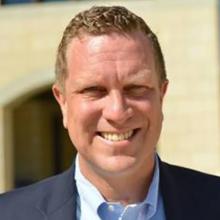
Previously, David served as assistant secretary of the U.S. Department of Energy’s Office of Energy Efficiency & Renewable Energy (EERE), where he led the largest government clean-energy innovation funding agency in the world. At EERE, he directed the U.S. government’s innovation strategy in the areas of sustainable transportation, renewable power, energy efficiency and clean-energy manufacturing, investing about $2 billion annually into American clean-energy innovation. He is considered a global expert in the development of next generation clean-energy technologies and the creation of new R&D and organizational models for high-impact clean energy innovation.
Prior to serving as assistant secretary of EERE, Danielson was employee #1 at the DOE’s Advanced Research Projects Agency–Energy (ARPA-E), a highly successful funding agency that focuses on the development of high-risk, high-reward clean-energy technologies. Prior to his government service, he was a clean-energy venture capitalist at General Catalyst and was also the founder and president of the MIT Energy Club.
David is a Precourt Energy Scholar at Stanford University and teaches a year-long course on energy transformation. David received a PhD in Materials Science from MIT.
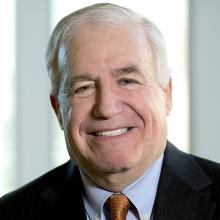
Paul Joskow is the Elizabeth and James Killian Professor of Economics emeritus at the Massachusetts Institute of Technology (MIT) where he joined the faculty in 1972. He has served as Chairman of the Department of Economics and as Director of the Center for Energy and Environmental Policy Research. From 2008 to 2017 he was the president of the Alfred P. Sloan Foundation. He is a Fellow of the American Academy of Arts and Sciences and the Econometric Society, and a Distinguished Fellow of the American Economic Association and of the Industrial Organization Society. Paul Joskow has published widely on topics in industrial organization, energy economics, electricity markets, and government regulation.

David R. Keith is Assistant Professor of System Dynamics at the MIT Sloan School of Management.
Drawing on his experience working in the automotive industry, David studies consumer behavior, firm strategy and the formation of markets for emerging automotive technologies. His research examines issues including spatial patterns of technology adoption, supply constraints in production, platform competition, and the impact of new technologies on energy consumption and the environment.
David has received several awards for his research, including a Fulbright scholarship, an Alcoa Foundation Fellowship from the American-Australian Association, and a Martin Family Sustainability Fellowship from the MIT Energy Initiative. David previously worked for Holden, the Australian subsidiary of General Motors, and URS Corporation, a global engineering and environmental consultancy.
David holds BEng (Hons.), BCom, and MEnv degrees from the University of Melbourne (Australia) and a PhD from the MIT Engineering Systems Division.

Prior to MIT Sloan, Knittel taught at the University of California, Davis, and at Boston University. His research focuses on industrial organization, environmental economics, and applied econometrics.
Knittel is an associate editor of The American Economic Journal—Economic Policy, The Journal of Industrial Economics, and the Journal of Energy Markets. His research has appeared in The American Economic Review, The Review of Economics and Statistics, The Journal of Industrial Economics, The Energy Journal, and other academic journals. He also is a Research Associate at the National Bureau of Economic Research in the Productivity, Industrial Organization, and Energy and Environmental Economics groups.
Knittel holds a BA in economics and political science from California State University, Stanislaus; an MA in economics from the University of California, Davis; and a PhD in economics from the University of California, Berkeley.
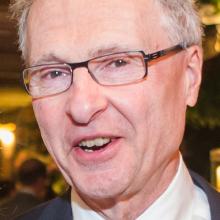
Earl Marmar received his Physics Ph.D. from Princeton University in 1977. During his graduate research at Princeton, he helped to develop the technique to introduce a low energy atom beam into the edge of tokamak plasma discharges, now used around the world for impurity particle transport studies. In the late 1970s, working on the Alcator A tokamak at MIT, Marmar was the co-discoverer of the MARFE, the edge plasma radiative condensation responsible for divertor detachment. A senior scientist in the MIT Physics Department, Marmar plays a principal role in the education and research supervision of PhD candidate graduate students at the PSFC. Marmar headed the Alcator C-Mod team from 2002 through the completion of operations in 2016, during which time the key results forming the physics basis for the high field tokamak approach to developing fusion energy, including SPARC and ARC, were obtained. He now heads the Magnetic Fusion Experiments Division at the PSFC, which includes the SPARC and Collaboration sub-divisions.

MS and PhD in Electrical Engineering from MIT, and Electrical Engineer from Comillas University in Madrid, Spain. Visiting professor at MIT (2008-present). Professor at Comillas University; founder and director (1984-1994) of its Institute for Research in Technology (IIT). Professor and Director of Training at the Florence School of Regulation. Life member of the Spanish Royal Academy of Engineering. Fellow and Life Member of IEEE. Commissioner at the Spanish Electricity Regulatory Commission (1995-2000). Independent Member of the Irish Single Electricity Market Committee (2007-2012). Member of the Board of Appeal of the EU Agency for the Coordination of Energy Regulators (2011-2016). Consultant and lecturer in about 40 countries. Currently researching on future trends in power systems, electrification planning in developing countries, and strategic issues in universal energy access.
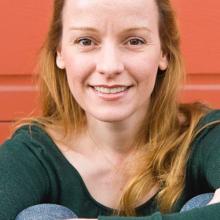
Chelsea has been working to accelerate electric transportation since cutting her teeth in the mid-1990s on the General Motors EV1 program. Her diverse adventures since have included co-founding Plug In America, guiding VantagePoint Capital Partners’ early investment in Tesla Motors, and directing an automotive X PRIZE to encourage development of compelling, highly efficient vehicles. Chelsea was featured in the Sony Pictures Classics documentary, Who Killed the Electric Car?, and she was a consulting producer on the follow-up, Revenge of the Electric Car.
Chelsea continues to work as an advisor, speaker, and friendly co-conspirator with companies, non-profits, and policy makers around the world to make the movement of people and goods cleaner, safer, and more accessible. She is a presenter on Fully Charged, occasionally writes about these topics when one gets under her skin, likes torque and horsepower more than anyone rightfully should, and tilts at windmills as a lifestyle choice.

Yang Shao-Horn is the W.M. Keck Professor of Energy at the Massachusetts Institute of Technology. She holds joint appointments in the Department of Mechanical Engineering, the Department of Materials Science and Engineering, and the Research Laboratory of Electronics, and has been a faculty member since 2002.
Shao-Horn’s research is centered on exploiting chemical/materials physics and physical/materials chemistry principles to understand charge transfer at the solid-gas/liquid interface to design and control the kinetics of (electro)chemical reactions and ion mobility in solids and liquids for storing electrons and making chemicals/fuels. Shao-Horn and coworkers have pioneered the use of electronic structure of oxides to develop universal guiding principles, design catalytic activity and stability across reactions from oxidation of air pollutants, to making of sustainable/solar fuels such as water splitting, CO2 reduction, and nitrogen reduction.
She was elected as a member of the National Academy of Engineering and awarded the Faraday Medal by the Royal Society of Chemistry. Shao-Horn is among the World’s Most Influential Scientific Minds and Highly Cited Researchers.
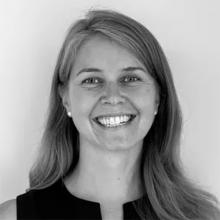
Kate Steel has a long career in the off-grid power sector, most recently as Energy Director for Power Africa. Prior to Power Africa, Steel was on the Energy Access and Investments team at Google and was manager of the World Bank-IFC Lighting Africa initiative.

Robert Stoner, MITEI’s deputy director for Science and Technology, also directs the Tata Center for Technology and Design—an MIT graduate program that trains future engineering and business leaders to invent technologies that address unmet needs and challenges in India and elsewhere in the developing world. Stoner also served as a study group member of Future of Solar Energy study.
He is the inventor of numerous optical and electronic devices and has an extensive international business background, having held senior positions at Intel and Zygo Corporations and founded technology companies in the United States and Europe. He was also an adjunct professor of Engineering at Brown University from 1995 through 2002. Immediately prior to joining MIT, he served in senior roles at the Clinton Foundation in Africa and India.

Jessika Trancik is an associate professor in the Institute for Data, Systems, and Society at the Massachusetts Institute of Technology. Her research examines and explains the dynamic costs and environmental impacts of energy technologies to inform technology design and policy, and her projects focus on electricity and transportation, with an emphasis on solar energy conversion and storage technologies. Jessika received her B.S. from Cornell University and her Ph.D. from the University of Oxford as a Rhodes Scholar. Before MIT, she spent several years at the Santa Fe Institute, where she is currently an external professor, and at Columbia University as an Earth Institute Fellow. Her work has been published in journals such as Nature and Proceedings of the National Academy of Sciences, and has been featured by news outlets such as the New York Times and NPR.
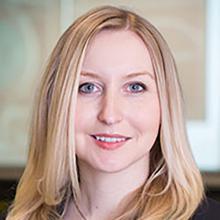
An international leader in assessing and refining the mathematical models used in fusion reactor design, White and the members of her research group develop diagnostic techniques that allow for simultaneous measurements of fluctuations in plasma density, and temperature in the core and edge of tokamak reactors, which are large toroidal devices in which plasmas reach temperatures higher 100 million degrees. She and her team hope to improve the understanding of how turbulence is suppressed and how the turbulent-transport of particles, energy, and momentum can be separated from one another—essential data in the development of fusion reactors.
White has taught a variety of courses at MIT, including graduate plasma physics, undergraduate electronics, and an advanced graduate course on the principles of plasma diagnostics, which attracts students from across the Institute and other local universities. She also helped team-teach the first offering of a new undergraduate course, 22.061 (Fusion Energy). Recently, White and a team of faculty led the development of a new MOOC on MITx covering nuclear science and engineering, 22.011x (Nuclear Science: Energy, Systems and Society), which was jointly offered online and on campus in spring 2019 as the new first-year seminar in NSE.
A past winner of the U.S. Department of Energy (DoE) Early Career Award, the American Physical Society Katherine E. Weimer Award, and the Fusion Power Associates Excellence in Fusion Engineering Award, White received a DoE ORISE Fusion Energy Science Fellowship, won the Marshall N. Rosenbluth Outstanding Doctoral Thesis Award, and was named a DoE Fusion Energy Postdoctoral Research Program Fellow and an APS Division of Plasma Physics distinguished lecturer. She is a member of the Division of Plasma Physics at the American Physical Society, and the American Nuclear Society. White is also a past recipient of the Junior Bose Award for Excellence in Teaching from the MIT School of Engineering and the PAI Outstanding Faculty Award, presented by the student chapter of the American Nuclear Society. She currently serves on the DoE Fusion Energy Sciences Advisory Committee and the advisory board for the Princeton Plasma Physics Laboratory.
A member of the MIT faculty since 2009, White earned her BS in physics and applied mathematics at the University of Arizona in 2003, and her MS and PhD in physics at the University of California at Los Angeles, in 2004 and 2008.


